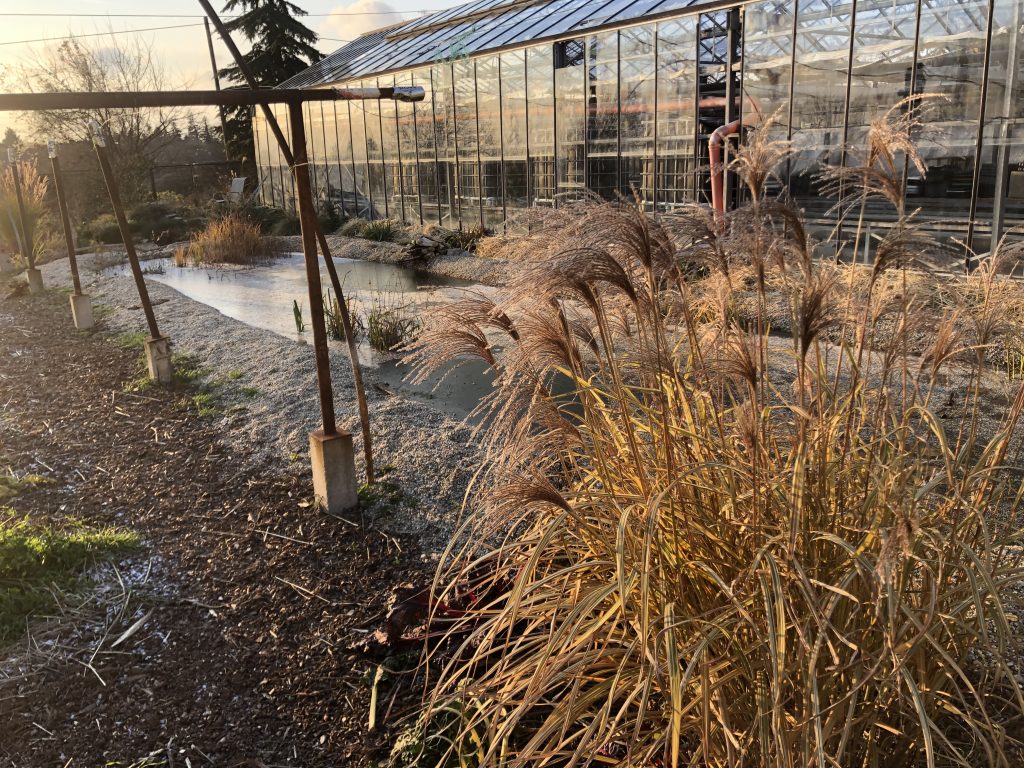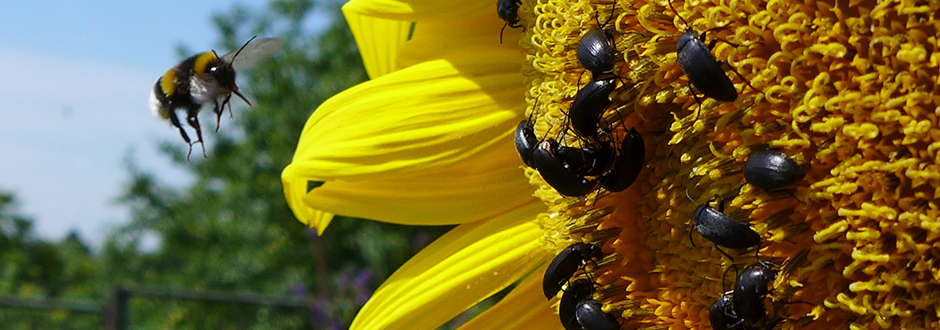
This year began on a positive note as Marika Szabó, an ornamental plant expert, paid us a visit. Our acquaintance flourished into a fruitful collaboration, leading to the inclusion of her selectively bred annual flowers in our vegetable garden plans. While renovation work was underway in the front yard, the flower garden found a temporary home in one corner of the kitchen garden, enticing beneficial insects and pollinators to help the vegetable plants thrive while providing a beautiful sight for everyone visiting the garden.
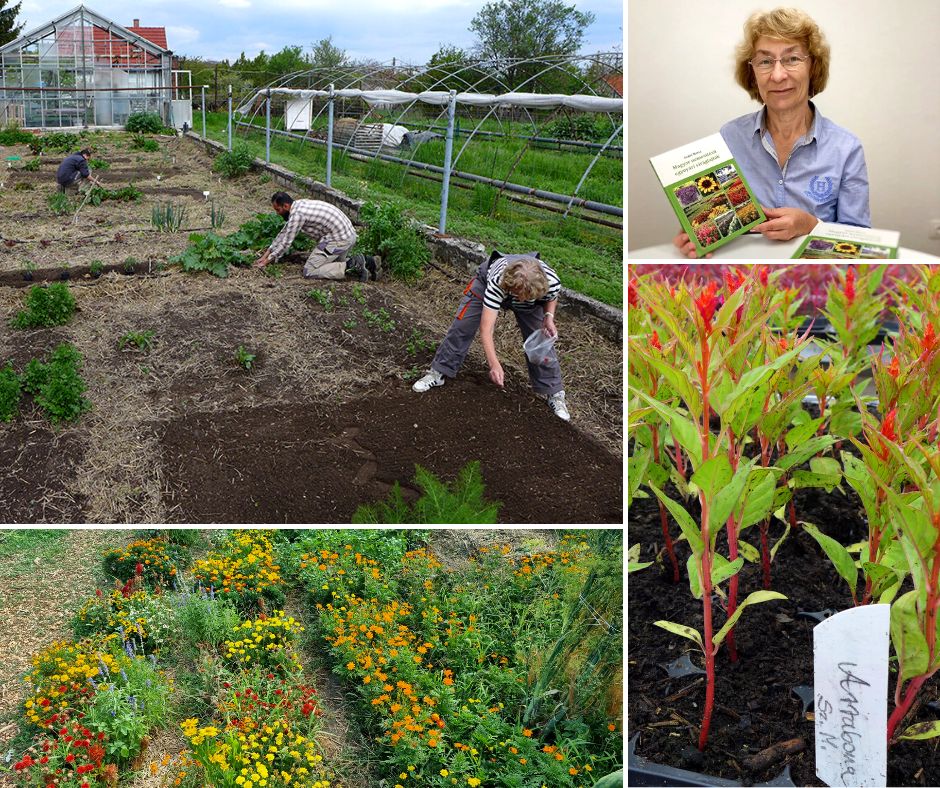
February – early seedlings sown
Building on the experiences of the previous year, we organized two spring seedling fairs this year. For the April fair, we sowed the seeds at the end of February in the greenhouse. Since the greenhouse renovations were still ongoing, we nurtured cold-resistant plants like lettuce and kohlrabi under the proven foil covering. These plants need to be transplanted early to mature before the onset of summer heat.
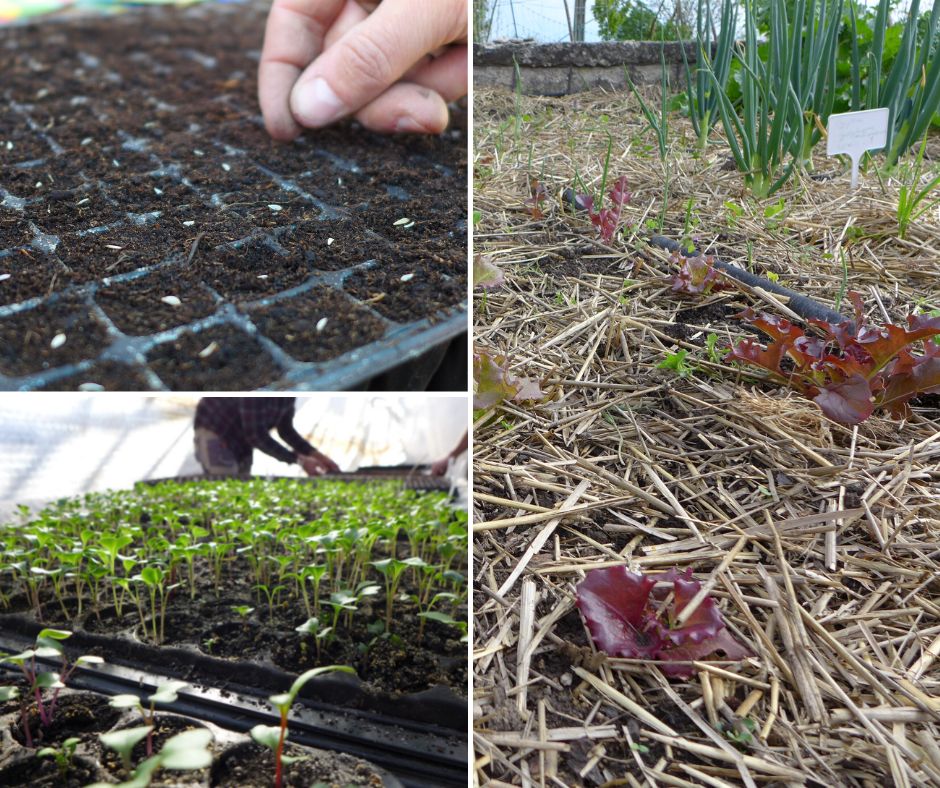
March- Miyawaki forest planted, mulching experiments
In mid-March, during the Miyawaki Forest tree-planting workshop, we planted 70 saplings and bushes with the help of 15 enthusiastic participants. The planting followed the Miyawaki method, incorporating three types of soil coverings. The use of different coverings also served as an experiment, allowing us to observe their effectiveness throughout the year—retaining moisture and hindering weed growth. In the spring months, wood chips, straw, and living mulch (phacelia, mustard) all performed exceptionally well.
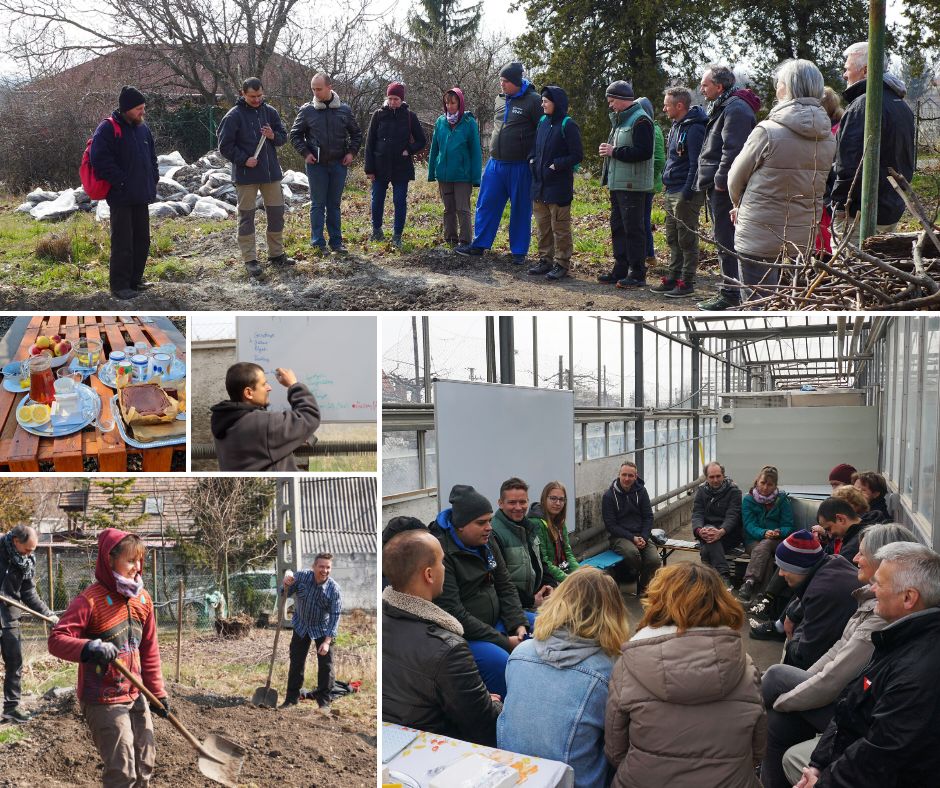
However, the real challenge came with the extreme drought, revealing the differences. The straw wore down, and the living mulch burned out, in July, leaving only the wood chips to endure the trials. Despite the challenges, thanks to careful soil preparation and a few well-timed waterings, most trees survived and showed considerable growth in their first year.
Spring seedling market
In March and April, we geared up for the „big“ seedling fair in May. This event, combined with a garden tour, attracted many enthusiasts. Unbeknownst to the visitors, they were in for a genuine gastronomic experience as the Chef and Gardener team treated them to mouth-watering delicacies. We prepared 28 different seedlings for the event, and the most popular ones quickly sold out. Learning from this, we plan to grow even more of these varieties next year.
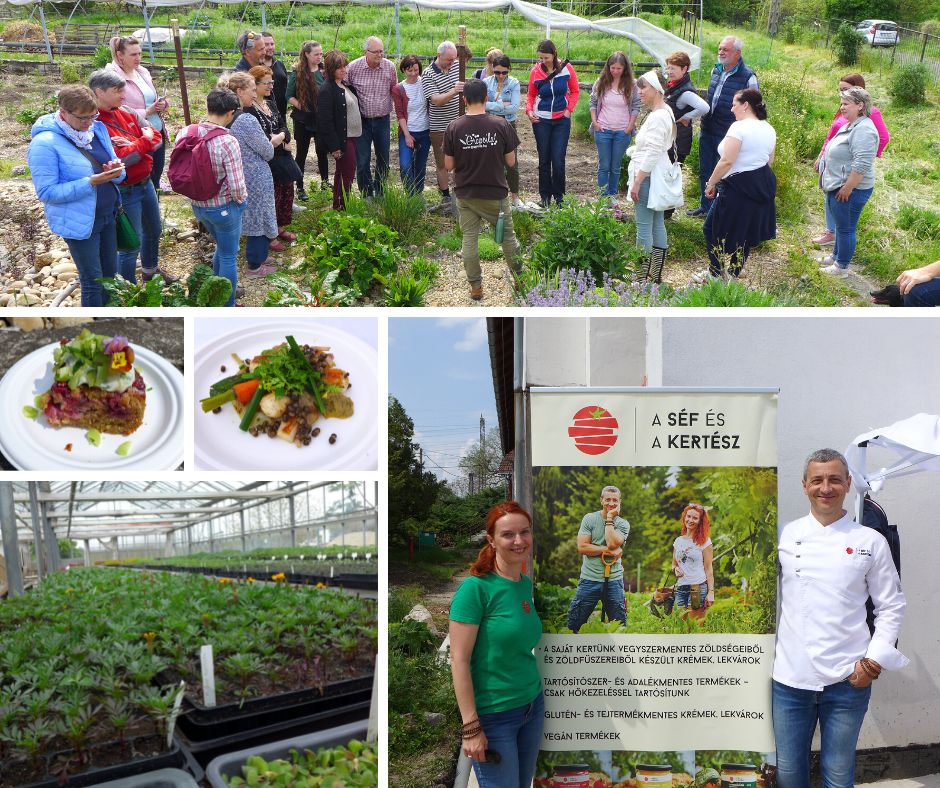
In line with permaculture principles, we dedicated the remaining seedlings to a good cause. We gifted them to four kindergartens and one school, allowing the children to track the seedlings‘ growth and harvest. A longer-term collaboration began with one of the kindergartens, and we hope to extend this educational program to other institutions. Our goal is to bring the concept of sustainability closer to urban children, helping them understand, respect, and protect the environment.
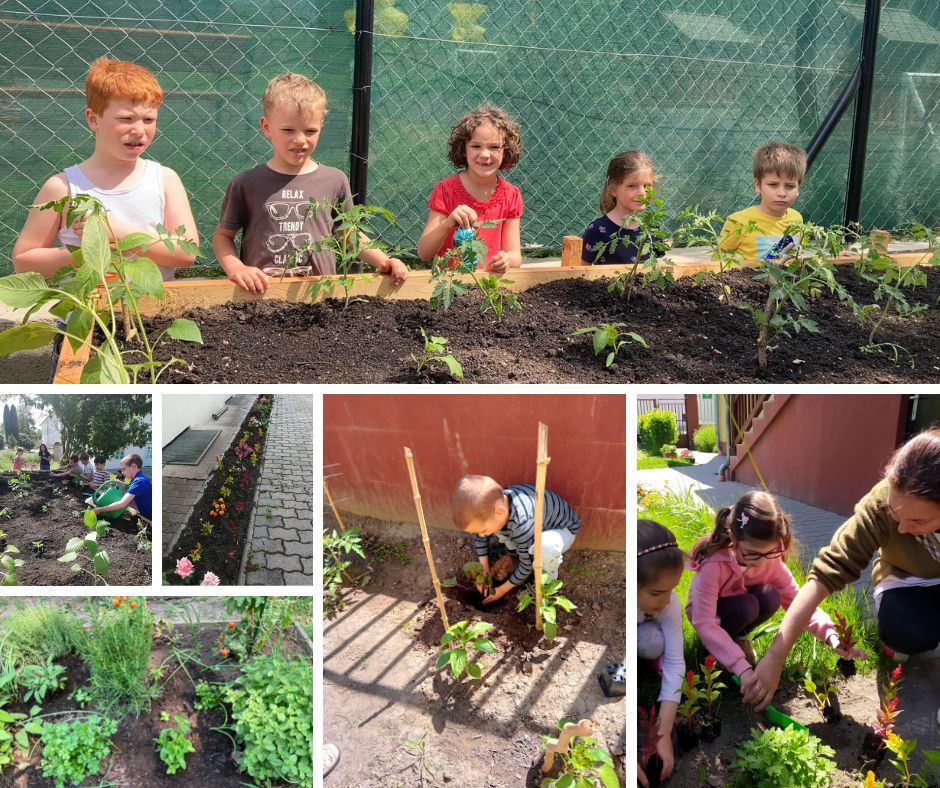
Following the seedling fair, we received feedback and photos from our customers, showing that the plants are thriving and rewarding the care they received with abundant yields, whether planted in small gardens, beds, or balcony boxes.
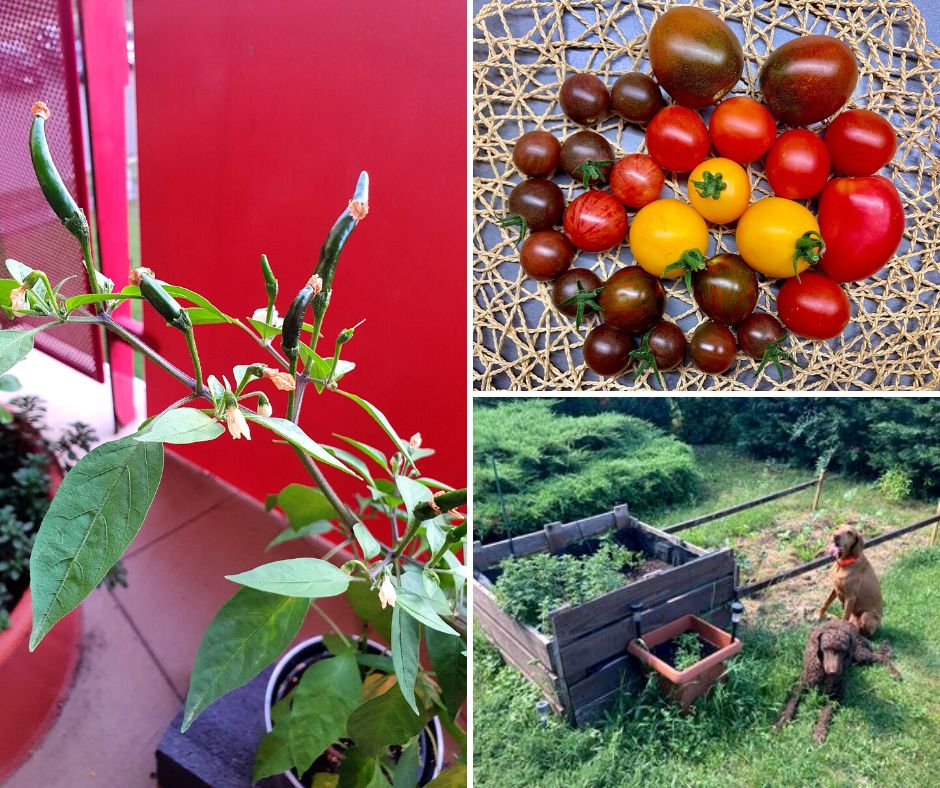
The seedlings we grew for our own use were planted in mixed arrangements in the kitchen garden, while the squash varieties were banished to the forest garden (direct seeding) to roam freely.
In May, the founder and designer of Grapoila’s permaculture garden, Gábor Molnár, handed over the baton to Ági Radnóczi. Gábor, an expert in large-scale domestic and international projects, continues his career in this direction. We express our gratitude to him for this wonderful garden and everything he taught us about permaculture and beyond. He introduced us to edible wild and weed plants, and the term „bakszakáll tócsni“ has since become a concept for us.
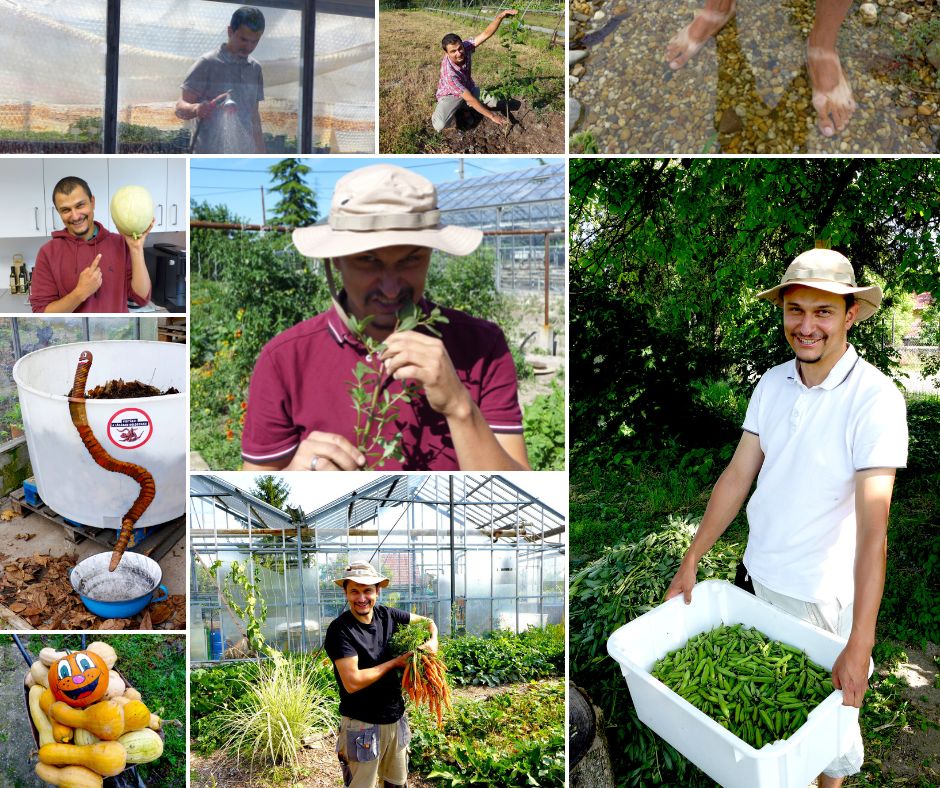
In June, three more people joined the gardening team, making it a group of five, working together with Ági and Marika, taking turns in the garden.
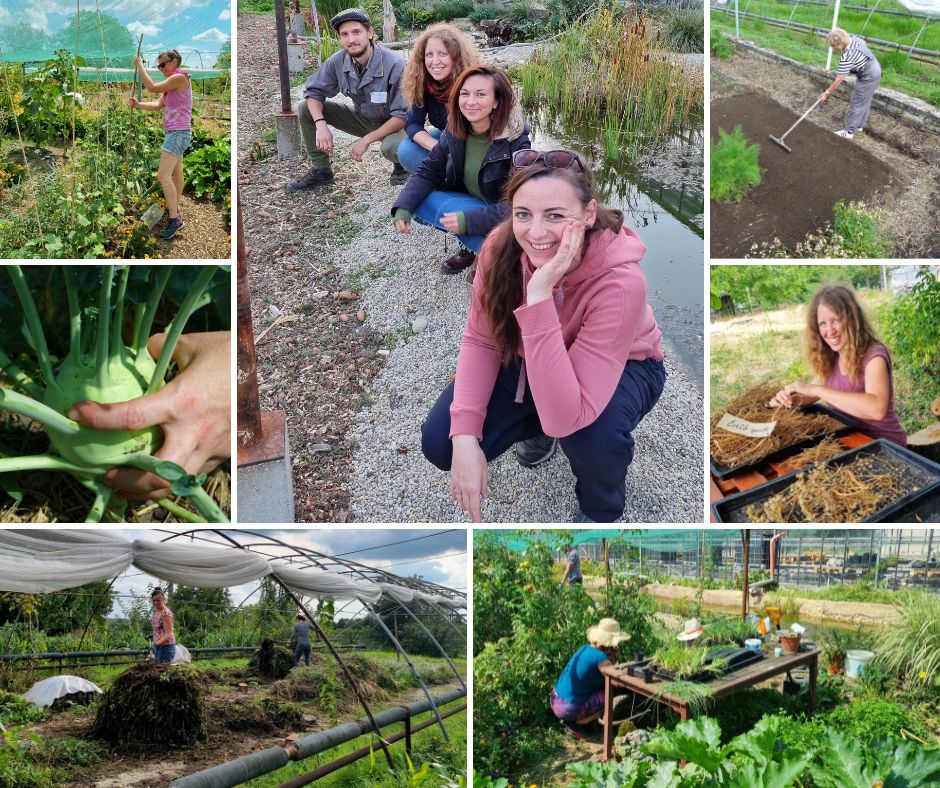
Summer – drought, water management
At the beginning of spring, signs of the unusual January precipitation shortage were already visible. The pond’s water level dropped, and the soil became dry. The summer drought tested the garden, our resources, and impacted the plants. Our water system initially held up well. We irrigated most of the kitchen garden with the irrigation system connected to tanks filled with rainwater. Everything else was watered by hand with cans, soft-stemmed plants more frequently and the young saplings in the forest garden less frequently but abundantly. We also set up shade nets over the kitchen garden.
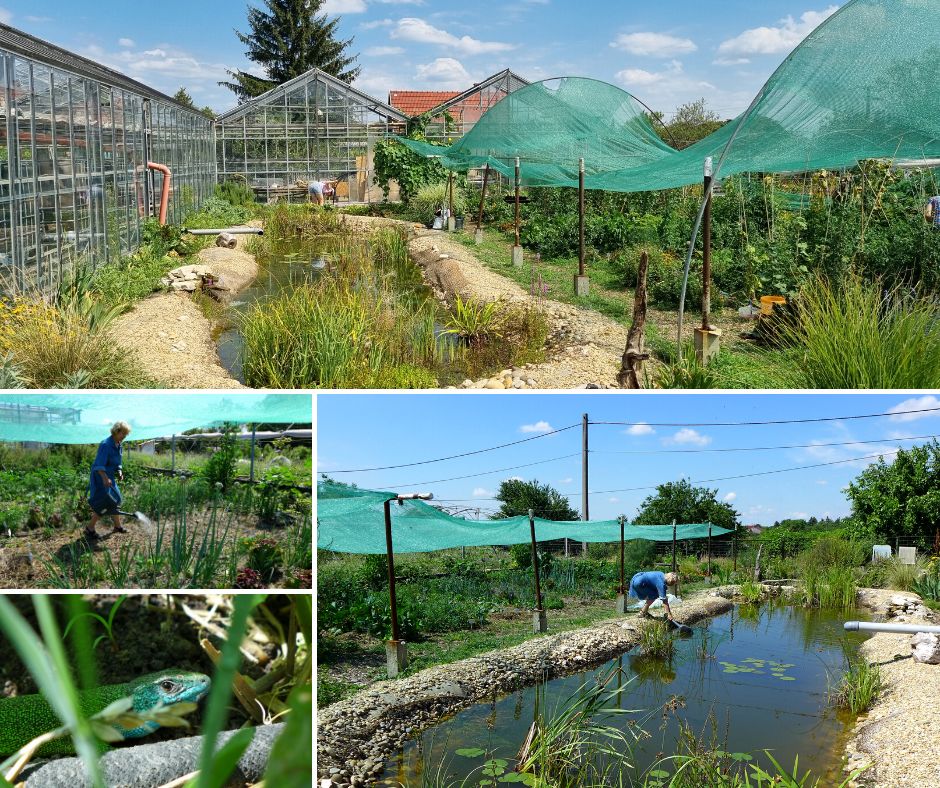
We carefully ensured dense planting (due to soil covering, weed suppression, and shading) and that every pulled-out radish, turnip, onion, and matured zucchini or cucumber was replaced with a new plant. Thanks to these efforts, the plants survived the extreme drought. In mid-summer, we noticed a lower yield in tomatoes, cucumbers, and squash; the plants concentrated all their energy on survival.
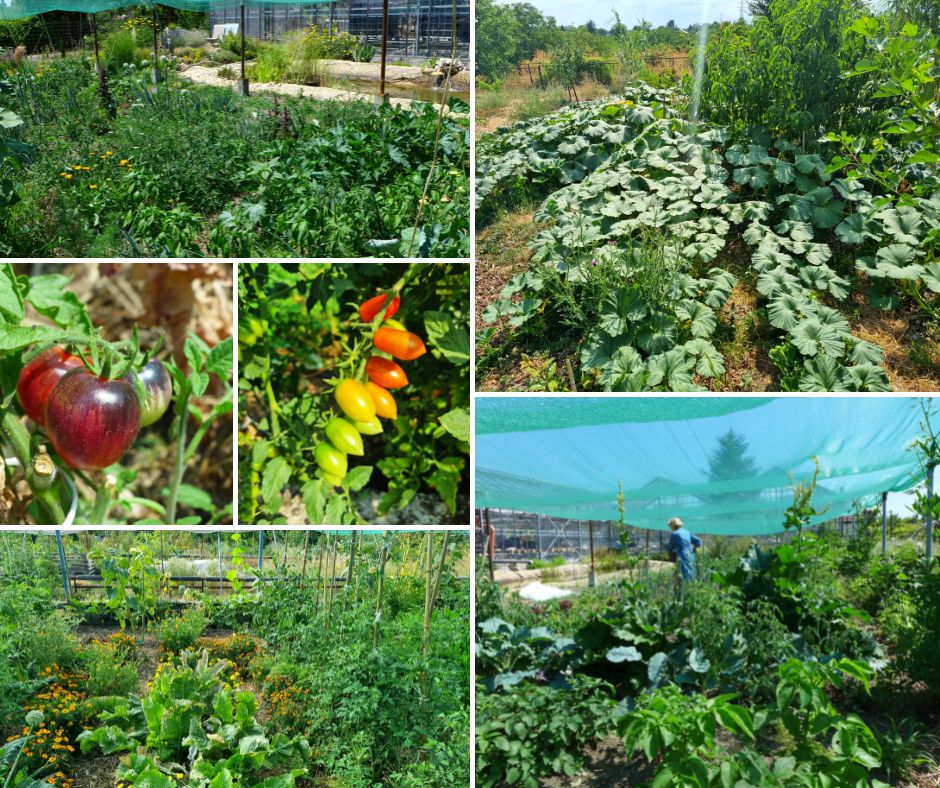
Autumn crops
Contrary to expectations, a significant turnaround occurred in September. As temperatures dropped, and the long-awaited rain arrived, the garden breathed a sigh of relief. With renewed vigor, everything blossomed and bore fruit until the first frost. It seemed like the garden wanted to compensate us for the slightly weaker summer season. Unfortunately, a few crops didn’t have time to ripen, such as pumpkins, luffa gourds, Peruvian ground cherries, and some potential in tomatoes. Nevertheless, we made pickles from the latter.
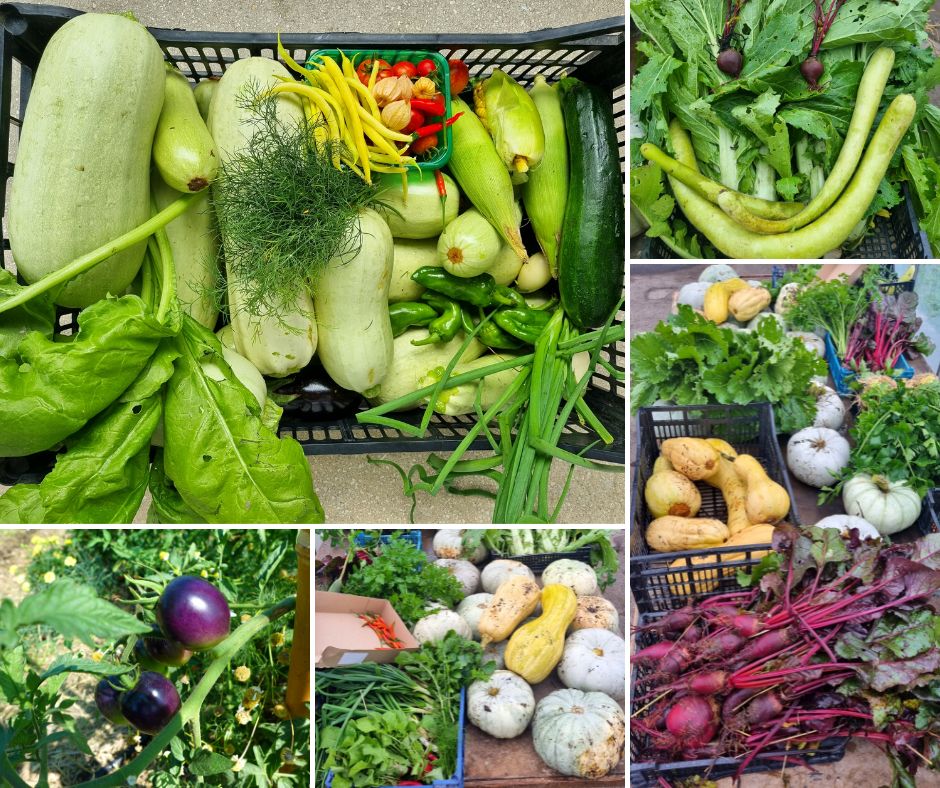
In the forest garden, we expanded cultivation to new areas by thick mulching between the young saplings. Besides squash varieties, this area also accommodated herbs, perennial spinach, strawberries, and, through later seeding, cabbage varieties.
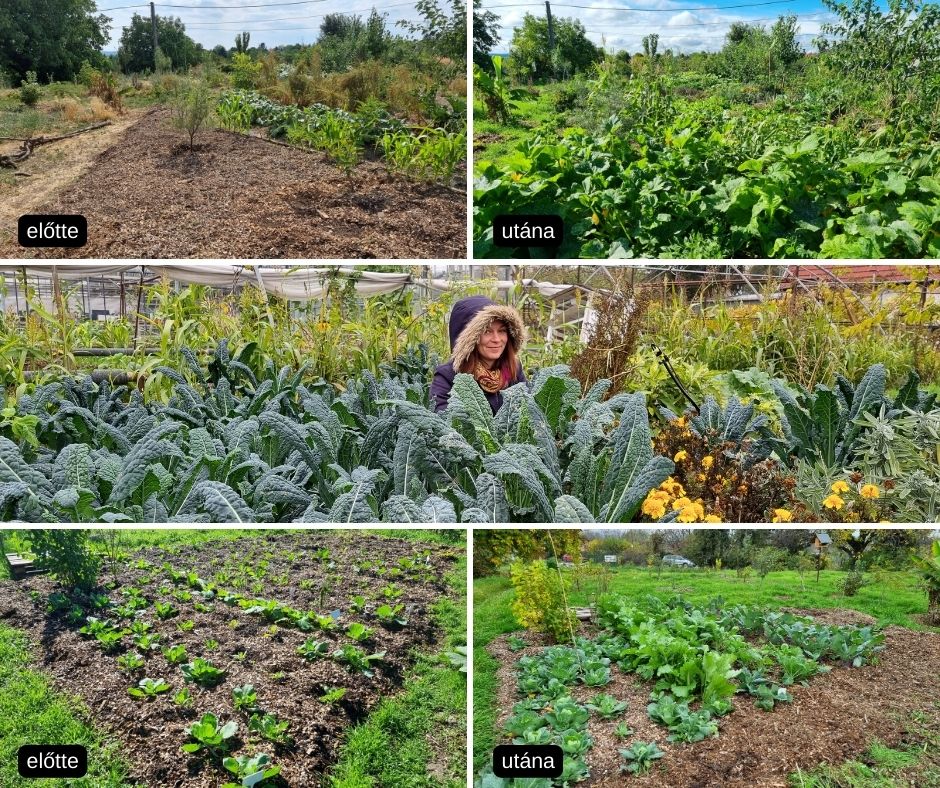
Autumn seedling market
This year, we organized a fall seedling fair for the first time, featuring nearly 15 herbs along with perennial spinach, arugula, and strawberries. Guided garden tours, a favorite program among visitors, had multiple over-subscriptions, and some attendees traveled across the country for this experience. It’s incredibly heartening to see so many people interested in permaculture, wanting to cultivate a garden in this spirit.
To avoid wasting the leftover herbs, we established contact with restaurants appreciating unique seedlings, ensuring all basil varieties found good homes.
This year was a journey of growth, learning, and sustainable practices. We look forward to further expanding our permaculture efforts in the coming years.

In October, we prepared for another „guest visit“ as members of the Győr Gardeners‘ Circle visited us. The group of nearly 50 people eagerly explored the garden, discovering behind-the-scenes secrets and learning why we embarked on permaculture farming around the Grapoila office building.
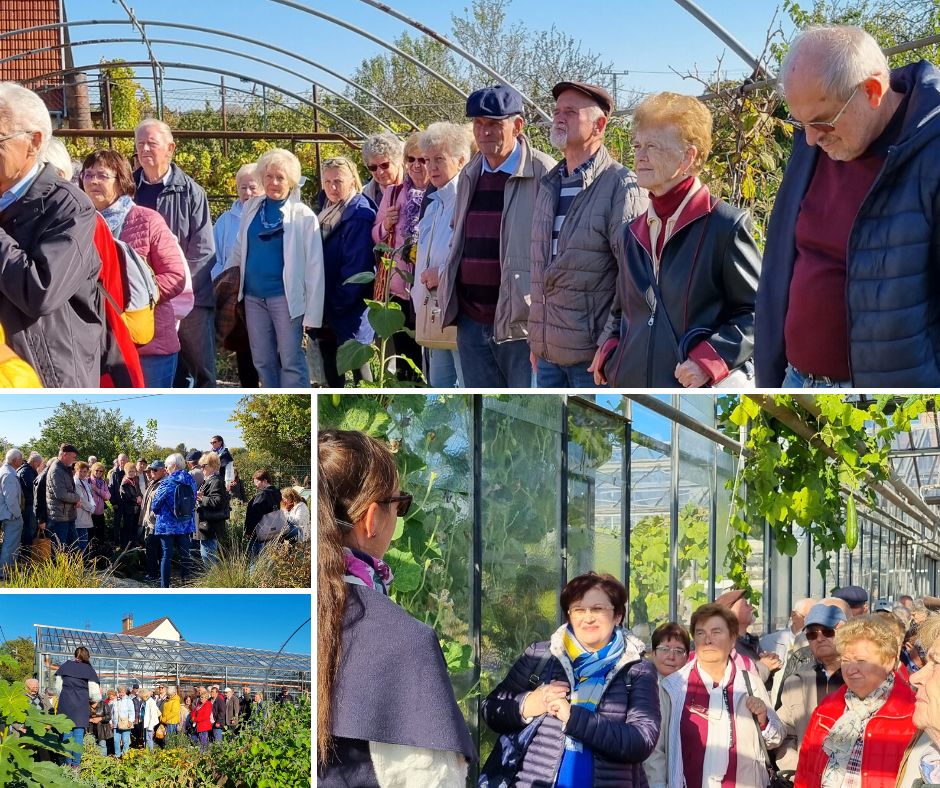
In November, we launched a leaf-collecting initiative. Although the initiative didn’t fully mature due to some setbacks, we took the leaves we managed to collect and embarked on a new experiment. We created deep-mulched beds, using a significant quantity of walnut leaves. Based on the latest theories and experiences from many, there’s no need to fear the growth-inhibiting effects of composted walnut leaves. We aim to prove this to you, encouraging you to let the walnut leaves stay, nourishing the soil where they fall. As the quantity of gardening work decreased, the number of collected seeds increased.
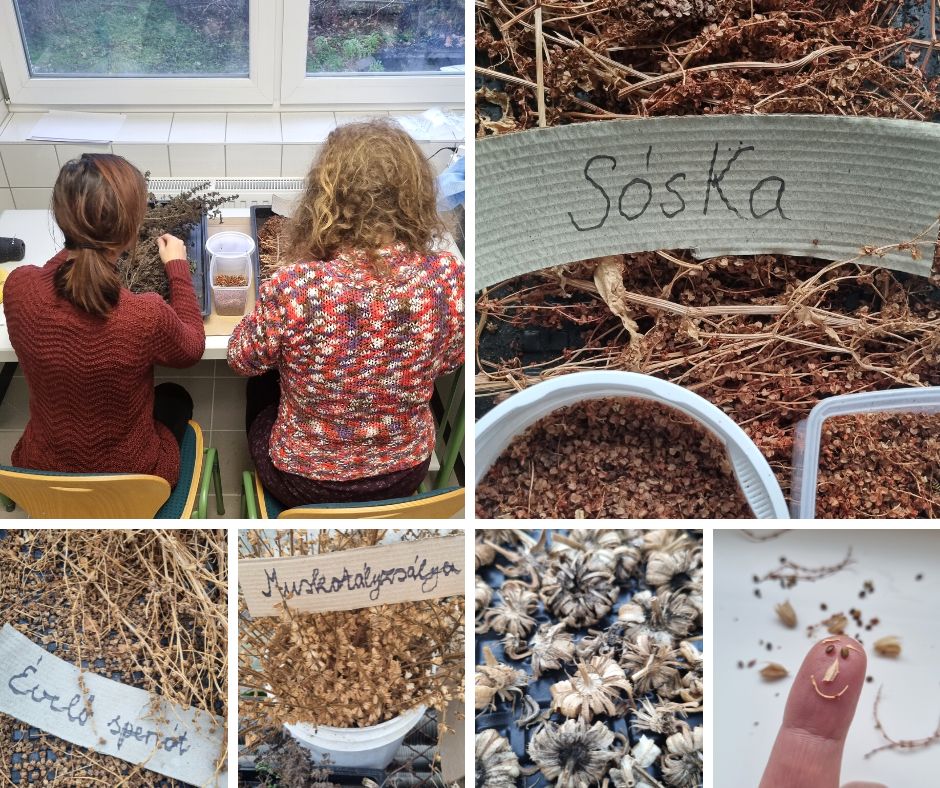
Steps towards water self-sufficiency
Reflecting on the year, the biggest challenge was the drop in the pond’s water level. To preserve the ecosystem, we had to resort to tap water to raise the critically low water level. There simply was no other choice. It’s clear that further steps need to be taken towards water self-sufficiency, and we’ve started this journey. We cleaned the well in the back of the property, increasing our water storage capacity by 30 m3. Due to the renovation of the office building, we integrated additional roof surfaces into the system, allowing us to channel rainwater into the pond and the garden from even more areas. Looking ahead, we need to focus even more on building organic-rich soil to store most of the moisture in the soil.
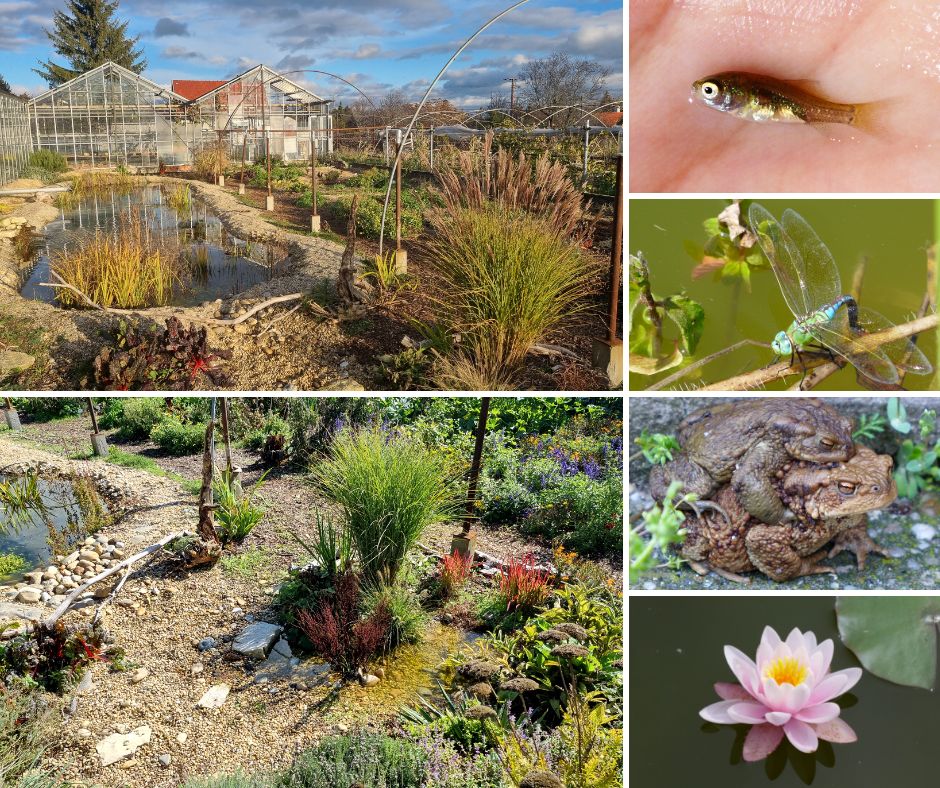
Throughout the season, we actively thermocomposted, ensuring an abundance of compost for the garden and reserves for the next seedling fair. In addition to thermocomposting, we are experimenting with a new method based on Johnson Sue’s approach. We will soon share the details of this experiment on our Facebook page for those interested.

Armed with many new experiences and ambitious plans, we eagerly await the year 2023. Planning, procurement, and organization are ongoing to prepare us for the first warming rays of the sun.
Curious about the continuation? Follow the transformation of the garden day by day on our Facebook page! If you want to be the first to know about this year’s events (seedling fairs, garden tours, workshops), subscribe to our newsletter!
